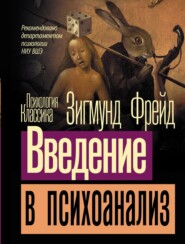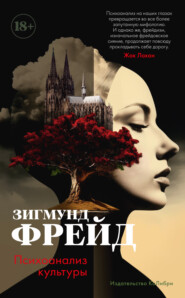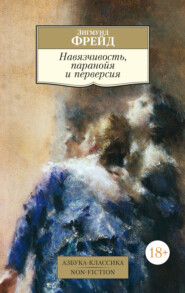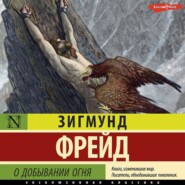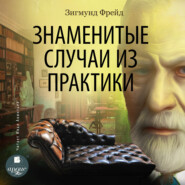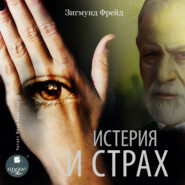По всем вопросам обращайтесь на: info@litportal.ru
(©) 2003-2024.
✖
The Interpretation of Dreams / Толкование сновидений
Настройки чтения
Размер шрифта
Высота строк
Поля
tells (p. 55) of a quite similar dream occurrence, from more remote times. “Among others we may here mention the dream of the elder Scaliger (Hennings, l. c., p. 300), who wrote a poem in praise of celebrated men of Verona, and to whom a man, named Brugnolus, appeared in a dream, complaining that he had been neglected. Though Scaliger did not recall ever having heard of him, he wrote some verses in his honour, and his son later discovered at Verona that a Brugnolus had formerly been famous there as a critic.
Myers is said to have published a whole collection of such hypermnesic dreams in the Proceedings of the Society for Psychical Research, which are unfortunately inaccessible to me. I believe every one who occupies himself with dreams will recognise as a very common phenomenon the fact that the dream gives proof of knowing and recollecting matters unknown to the waking person. In my psychoanalytic investigations of nervous patients, of which I shall speak later, I am every week more than once in position to convince my patients from their dreams that they are well acquainted with quotations, obscene expressions, etc., and that they make use of these in their dreams, although they have forgotten them in the waking state. I shall cite here a simple case of dream hypermnesia because it was easy to trace the source which made the knowledge accessible to the dream.
A patient dreamed in a lengthy connection that he ordered a “Kontuszówka” in a café, and after reporting this inquired what it might mean, as he never heard the name before. I was able to answer that Kontuszówka was a Polish liquor which he could not have invented in his dream, as the name had long been familiar to me in advertisements. The patient would not at first believe me, but some days later, after he had realised his dream of the café, he noticed the name on a signboard at the street corner, which he had been obliged to pass for months at least twice a day.
I have learned from my own dreams how largely the discovery of the origin of some of the dream elements depends on accident. Thus, for years before writing this book, I was haunted by the picture of a very simply formed church tower which I could not recall having seen. I then suddenly recognised it with absolute certainty at a small station between Salzburg and Reichenhall. This was in the later nineties, and I had travelled over the road for the first time in the year 1886. In later years, when I was already busily engaged in the study of dreams, I was quite annoyed at the frequent recurrence of the dream picture of a certain peculiar locality. I saw it in definite local relation to my person – to my left, a dark space from which many grotesque sandstone figures stood out. A glimmer of recollection, which I did not quite credit, told me it was the entrance to a beer-cellar, but I could explain neither the meaning nor the origin of this dream picture. In 1907 I came by chance to Padua, which, to my regret, I had been unable to visit since 1895. My first visit to this beautiful university city was unsatisfactory; I was unable to see Giotto̕s frescoes in the church of the Madonna dell̕ Arena, and on my way there turned back on being informed that the little church was closed on the day. On my second visit, twelve years later, I thought of compensating myself for this, and before everything else I started out for Madonna dell̕ Arena. On the street leading to it, on my left, probably at the place where I had turned in 1895, I discovered the locality which I had so often seen in the dream, with its sandstone figures. It was in fact the entrance to a restaurant garden.
One of the sources from which the dream draws material for reproduction – material which in part is not recalled or employed in waking thought – is to be found in childhood. I shall merely cite some of the authors who have observed and emphasized this.
Hildebrandt
(p. 23): “It has already been expressly admitted that the dream sometimes brings back to the mind with wonderful reproductive ability remote and even forgotten experiences from the earliest periods.”
Strümpell
(p. 40): “The subject becomes more interesting when we remember how the dream sometimes brings forth, as it were, from among the deepest and heaviest strata which later years have piled upon the earliest childhood experiences, the pictures of certain places, things, and persons, quite uninjured and with their original freshness. This is not limited merely to such impressions as have gained vivid consciousness during their origin or have become impressed with strong psychic validity, and then later return in the dream as actual reminiscences, causing pleasure to the awakened consciousness. On the contrary, the depths of the dream memory comprise also such pictures of persons, things, places, and early experiences as either possessed but little consciousness and no psychic value at all, or have long ago lost both, and therefore appear totally strange and unknown both in the dream and in the waking state, until their former origin is revealed.”
Volkelt
(p. 119): “It is essentially noteworthy how easily infantile and youthful reminiscences enter into the dream. What we have long ceased to think about, what has long since lost for us all importance, is constantly recalled by the dream.”
The sway of the dream over the infantile material, which, as is well known, mostly occupies the gaps in the conscious memory, causes the origin of interesting hypermnestic dreams, a few of which I shall here report. Maury
relates (p. 92) that as a child he often went from his native city, Meaux, to the neighbouring Trilport, where his father superintended the construction of a bridge. On a certain night a dream transported him to Trilport, and he was again playing in the city streets. A man approached him wearing some sort of uniform. Maury asked him his name, and he introduced himself, saying that his name was C-, and that he was a bridge guard. On waking, Maury, who still doubted the reality of the reminiscence, asked his old servant, who had been with him in his childhood, whether she remembered a man of this name. “Certainly,” was the answer, “he used to be watchman on the bridge which your father was building at that time.”
Maury reports another example demonstrating just as nicely the reliability of infantile reminiscences appearing in dreams. Mr. F-, who had lived as a child in Montbrison, decided to visit his home and old friends of his family after an absence of twenty-five years. The night before his departure he dreamt that he had reached his destination, and that he met near Montbrison a man, whom he did not know by sight, who told him he was Mr. F., a friend of his father. The dreamer remembered that as a child he had known a gentleman of this name, but on waking he could no longer recall his features. Several days later, having really arrived at Montbrison, he found the supposedly unknown locality of his dream, and there met a man whom he at once recognised as the Mr. F. of his dream. The real person was only older than the one in the dream picture.
I may here relate one of my own dreams in which the remembered impression is replaced by an association. In my dream I saw a person whom I recognised, while dreaming, as the physician of my native town. The features were indistinct and confused with the picture of one of my colleague teachers, whom I still see occasionally. What association there was between the two persons I could not discover on awakening. But upon questioning my mother about the physician of my early childhood, I discovered that he was a one-eyed man. My teacher, whose figure concealed that of the physician in the dream, was also one-eyed. I have not seen the physician for thirty-eight years, and I have not to my knowledge thought of him in my waking state, although a scar on my chin might have reminded me of his help.
As if to counterbalance the immense rôle ascribed to the infantile impressions in the dream, many authors assert that the majority of dreams show elements from the most recent time. Thus Robert
(p. 46) declares that the normal dream generally occupies itself only with the impressions of the recent days. We learn indeed that the theory of the dream advanced by Robert imperatively demands that the old impressions should be pushed back, and the recent ones brought to the front. Nevertheless the fact claimed by Robert really exists; I can confirm this from my own investigations. Nelson,
an American author, thinks that the impressions most frequently found in the dream date from two or three days before, as if the impressions of the day immediately preceding the dream were not sufficiently weakened and remote.
Many authors who are convinced of the intimate connection between the dream content and the waking state are impressed by the fact that impressions which have intensely occupied the waking mind appear in the dream only after they have been to some extent pushed aside from the elaboration of the waking thought. Thus, as a rule, we do not dream of a dead beloved person while we are still overwhelmed with sorrow. Still Miss Hallam,
one of the latest observers, has collected examples showing the very opposite behaviour, and claims for the point the right of individual psychology.
The third and the most remarkable and incomprehensible peculiarity of the memory in dreams, is shown in the selection of the reproduced material, for stress is laid not only on the most significant, but also on the most indifferent and superficial reminiscences. On this point I shall quote those authors who have expressed their surprise in the most emphatic manner.
Hildebrandt
(p. 11): “For it is a remarkable fact that dreams do not, as a rule, take their elements from great and deep-rooted events or from the powerful and urgent interests of the preceding day, but from unimportant matters, from the most worthless fragments of recent experience or of a more remote past. The most shocking death in our family, the impressions of which keep us awake long into the night, becomes obliterated from our memories, until the first moment of awakening brings it back to us with depressing force. On the other hand, the wart on the forehead of a passing stranger, of whom we did not think for a second after he was out of sight, plays its part in our dreams.”
Strümpell
(p. 39): “…such cases where the analysis of a dream brings to light elements which, although derived from events of the previous day or the day before the last, yet prove to be so unimportant and worthless for the waking state that they merge into forgetfulness shortly after coming to light. Such occurrences may be statements of others heard accidentally or actions superficially observed, or fleeting perceptions of things or persons, or single phrases from books, etc.”
Havelock Ellis
(p. 727): “The profound emotions of waking life, the questions and problems on which we spread our chief voluntary mental energy, are not those which usually present themselves at once to dream-consciousness. It is, so far as the immediate past is concerned, mostly the trifling, the incidental, the “forgotten” impressions of daily life which reappear in our dreams. The psychic activities that are awake most intensely are those that sleep most profoundly.”
Binz
(p. 45) takes occasion from the above-mentioned characteristics of the memory in dreams to express his dissatisfaction with explanations of dreams which he himself has approved of: “And the normal dream raises similar questions. Why do we not always dream of memory impressions from the preceding days, instead of going back to the almost forgotten past lying far behind us without any perceptible reason? Why in a dream does consciousness so often revive the impression of indifferent memory pictures while the cerebral cells bearing the most sensitive records of experience remain for the most part inert and numb, unless an acute revival during the waking state has shortly before excited them?”
We can readily understand how the strange preference of the dream memory for the indifferent and hence the unnoticed details of daily experience must usually lead us to overlook altogether the dependence of the dream on the waking state, or at least make it difficult to prove this dependence in any individual case. It thus happened that in the statistical treatment of her own and her friend̕s dreams, Miss Whiton Calkins
found 11 per cent. of the entire number that showed no relation to the waking state. Hildebrandt was certainly correct in his assertion that all our dream pictures could be genetically explained if we devoted enough time and material to the tracing of their origin. To be sure, he calls this “a most tedious and thankless job.” For it would at most lead us to ferret out all kinds of quite worthless psychic material from the most remote corners of the memory chamber, and to bring to light some very indifferent moments from the remote past which were perhaps buried the next hour after their appearance.” I must, however, express my regret that this discerning author refrained from following the road whose beginning looked so unpromising; it would have led him directly to the centre of the dream problem.
The behaviour of the memory in dreams is surely most significant for every theory of memory in general. It teaches us that “nothing which we have once psychically possessed is ever entirely lost” (Scholz
); or as Delbœuf puts it, “que toute impression même la plus insignifiante, laisse une trace inaltérable, indéfiniment susceptible de reparaître au jour,” a conclusion to which we are urged by so many of the other pathological manifestations of the psychic life. Let us now bear in mind this extraordinary capability of the memory in the dream, in order to perceive vividly the contradictions which must be advanced in certain dream theories to be mentioned later, when they endeavour to explain the absurdities and incoherence of dreams through a partial forgetting of what we have known during the day.
One might even think of reducing the phenomenon of dreaming to that of memory, and of regarding the dream as the manifestation of an activity of reproduction which does not rest even at night, and which is an end in itself. Views like those expressed by Pilcz
would corroborate this, according to which intimate relations are demonstrable between the time of dreaming and the contents of the dream from the fact that the impressions reproduced by the dream in sound sleep belong to the remotest past while those reproduced towards morning are of recent origin. But such a conception is rendered improbable from the outset by the manner of the dream̕s behaviour towards the material to be remembered. Strümpell
justly calls our attention to the fact that repetitions of experiences do not occur in the dream. To be sure the dream makes an effort in that direction, but the next link is wanting, or appears in changed form, or it is replaced by something entirely novel. The dream shows only fragments of reproduction; this is so often the rule that it admits of theoretical application. Still there are exceptions in which the dream repeats an episode as thoroughly as our memory would in its waking state. Delbœuf tells of one of his university colleagues who in his dream repeated, with all its details, a dangerous wagon ride in which he escaped accident as if by miracle. Miss Calkins
mentions two dreams, the contents of which exactly reproduced incidents from the day before, and I shall later take occasion to report an example which came to my notice, showing a childish experience which returned unchanged in a dream[3 - From subsequent experience I am able to state that it is not at all rare to find in dreams repetitions of harmless or unimportant occupations of the waking state, such as packing trunks, preparing food, work in the kitchen, etc., but in such dreams the dreamer himself emphasizes not the character but the reality of the memory, “I have really done all this in the day time."].
(c) Dream Stimuli and Dream Sources. – What is meant by dream stimuli and dream sources may be explained by referring to the popular saying, “Dreams come from the stomach.” This notion conceals a theory which conceives the dream as a result of a disturbance of sleep. We should not have dreamed if some disturbing element had not arisen in sleep, and the dream is the reaction from this disturbance. The discussion of the exciting causes of dreams takes up the most space in the descriptions of the authors. That this problem could appear only after the dream had become an object of biological investigation is self-evident. The ancients who conceived the dream as a divine inspiration had no need of looking for its exciting source; to them the dream resulted from the will of the divine or demoniacal powers, and its content was the product of their knowledge or intention. Science, however, soon raised the question whether the stimulus to the dream is always the same, or whether it might be manifold, and thus led to the question whether the causal explanation of the dream belongs to psychology or rather to physiology. Most authors seem to assume that the causes of the disturbance of sleep, and hence the sources of the dream, might be of various natures, and that physical as well as mental irritations might assume the rôle of dream inciters. Opinions differ greatly in preferring this or that one of the dream sources, in ranking them, and indeed as to their importance for the origin of dreams.
Wherever the enumeration of dream sources is complete we ultimately find four forms, which are also utilised for the division of dreams:-
I. External (objective) sensory stimuli.
II. Internal (subjective) sensory stimuli.
III. Internal (organic) physical excitations.
IV. Purely psychical exciting sources.
I. The External Sensory Stimuli. – The younger Strümpell, son of the philosopher whose writings on the subject have already more than once served us as a guide in the problem of dreams, has, as is well known, reported his observations on a patient who was afflicted with general anaesthesia of the skin and with paralysis of several of the higher sensory organs. This man merged into sleep when his few remaining sensory paths from the outer world were shut off. When we wish to sleep we are wont to strive for a situation resembling the one in Strümpell̕s experiment. We close the most important sensory paths, the eyes, and we endeavour to keep away from the other senses every stimulus and every change of the stimuli acting upon them. We then fall asleep, although we are never perfectly successful in our preparations. We can neither keep the stimuli away from the sensory organs altogether, nor can we fully extinguish the irritability of the sensory organs. That we may at any time be awakened by stronger stimuli should prove to us “that the mind has remained in constant communication with the material world even during sleep.” The sensory stimuli which reach us during sleep may easily become the source of dreams.
There are a great many stimuli of such nature, ranging from those that are unavoidable, being brought on by the sleeping state or at least occasionally induced by it, to the accidental waking stimuli which are adapted or calculated to put an end to sleep. Thus a strong light may force itself into the eyes, a noise may become perceptible, or some odoriferous matter may irritate the mucous membrane of the nose. In the spontaneous movements of sleep we may lay bare parts of the body and thus expose them to a sensation of cold, or through change of position we may produce sensations of pressure and touch. A fly may bite us, or a slight accident at night may simultaneously attack more than one sense. Observers have called attention to a whole series of dreams in which the stimulus verified on waking, and a part of the dream content corresponded to such a degree that the stimulus could be recognised as the source of the dream.
I shall here cite a number of such dreams collected by Jessen
(p. 527), traceable to more or less accidental objective sensory stimuli. “Every indistinctly perceived noise gives rise to corresponding dream pictures; the rolling of thunder takes us into the thick of battle, the crowing of a cock may be transformed into human shrieks of terror, and the creaking of a door may conjure up dreams of burglars breaking into the house. When one of our blankets slips off at night we may dream that we are walking about naked or falling into the water. If we lie diagonally across the bed with our feet extending beyond the edge, we may dream of standing on the brink of a terrifying precipice, or of falling from a steep height. Should our head accidentally get under the pillow we may then imagine a big rock hanging over us and about to crush us under its weight. Accumulation of semen produces voluptuous dreams, and local pain the idea of suffering ill treatment, of hostile attacks, or of accidental bodily injuries.”
“Meier (Versuch einer Erklärung des Nachtwandelns, Halle, 1758, p. 33), once dreamed of being assaulted by several persons who threw him flat on the ground and drove a stake into the ground between his big and second toes. While imagining this in his dream he suddenly awoke and felt a blade of straw sticking between his toes. The same author, according to Hemmings (Von den Traumen und Nachtwandeln, Weimar, 1784, p. 258) dreamed on another occasion that he was being hanged when his shirt was pinned somewhat tight around his neck. Hauffbauer dreamed in his youth of having fallen from a high wall and found upon waking that the bedstead had come apart, and that he had actually fallen to the floor… Gregory relates that he once applied a hot-water bottle to his feet, and dreamed of taking a trip to the summit of Mount Ætna, where he found the heat on the ground almost unbearable. After having applied a blistering plaster to his head, a second man dreamed of being scalped by Indians; a third, whose shirt was damp, dreamed of being dragged through a stream. An attack of gout caused the patient to believe that he was in the hands of the Inquisition, and suffering pains of torture (Macnish).”
The argument based upon the resemblance between stimulus and dream content is reinforced if through a systematic induction of stimuli we succeed in producing dreams corresponding to the stimuli. According to Macnish such experiments have already been made by Giron de Buzareingues. “He left his knee exposed and dreamed of travelling in a mail coach at night. He remarked in this connection that travellers would well know how cold the knees become in a coach at night. Another time he left the back of his head uncovered, and dreamed of taking part in a religious ceremony in the open air. In the country where he lived it was customary to keep the head always covered except on such occasions.”
Maury






